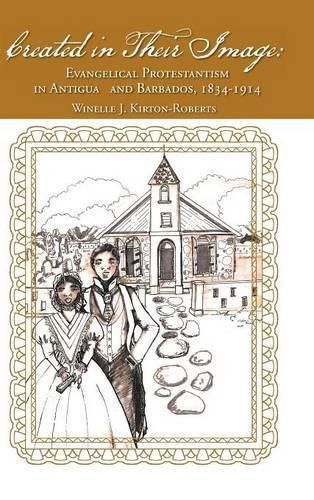Readings Newsletter
Become a Readings Member to make your shopping experience even easier.
Sign in or sign up for free!
You’re not far away from qualifying for FREE standard shipping within Australia
You’ve qualified for FREE standard shipping within Australia
The cart is loading…






This title is printed to order. This book may have been self-published. If so, we cannot guarantee the quality of the content. In the main most books will have gone through the editing process however some may not. We therefore suggest that you be aware of this before ordering this book. If in doubt check either the author or publisher’s details as we are unable to accept any returns unless they are faulty. Please contact us if you have any questions.
E very denomination entered the Caribbean with a mission. While the general motivation was to convert the population to Christianity, the accompanying practices were undoubtedly intended to civilise and westernise. The Moravians and Methodists were the first two evangelical Protestant missions that brought the gospel to the enslaved Africans in Caribbean. When emancipation was granted to the enslaved Africans by the British government in 1834, the newly freed Africans had their own ideas as to how they would live, work, and worship. They were in a struggle for freedom, self-affirmation, self-expression, and personal development. But the Moravians and Methodists had independently framed their thoughts on what the formerly enslaved Africans needed to survive and succeed. What the evangelical Protestants created for themselves was an image of the formerly enslaved African. They had drawn a mental picture of a European Christian of African descent who was residing in the Caribbean and practicing the Christianity of the West. The Caribbean evangelical black was a reflection of Europeans but never manage to fit itno the submissive Christian image. This book traces the eighty years during which formerly enslaved Africans adapted to their new state of freedom in Antigua and Barbados and the Moravians and Methodists sought to shape their way of life. The book examines the theological dispositions on slavery, gender, education, religion, sexuality, and race.
$9.00 standard shipping within Australia
FREE standard shipping within Australia for orders over $100.00
Express & International shipping calculated at checkout
This title is printed to order. This book may have been self-published. If so, we cannot guarantee the quality of the content. In the main most books will have gone through the editing process however some may not. We therefore suggest that you be aware of this before ordering this book. If in doubt check either the author or publisher’s details as we are unable to accept any returns unless they are faulty. Please contact us if you have any questions.
E very denomination entered the Caribbean with a mission. While the general motivation was to convert the population to Christianity, the accompanying practices were undoubtedly intended to civilise and westernise. The Moravians and Methodists were the first two evangelical Protestant missions that brought the gospel to the enslaved Africans in Caribbean. When emancipation was granted to the enslaved Africans by the British government in 1834, the newly freed Africans had their own ideas as to how they would live, work, and worship. They were in a struggle for freedom, self-affirmation, self-expression, and personal development. But the Moravians and Methodists had independently framed their thoughts on what the formerly enslaved Africans needed to survive and succeed. What the evangelical Protestants created for themselves was an image of the formerly enslaved African. They had drawn a mental picture of a European Christian of African descent who was residing in the Caribbean and practicing the Christianity of the West. The Caribbean evangelical black was a reflection of Europeans but never manage to fit itno the submissive Christian image. This book traces the eighty years during which formerly enslaved Africans adapted to their new state of freedom in Antigua and Barbados and the Moravians and Methodists sought to shape their way of life. The book examines the theological dispositions on slavery, gender, education, religion, sexuality, and race.